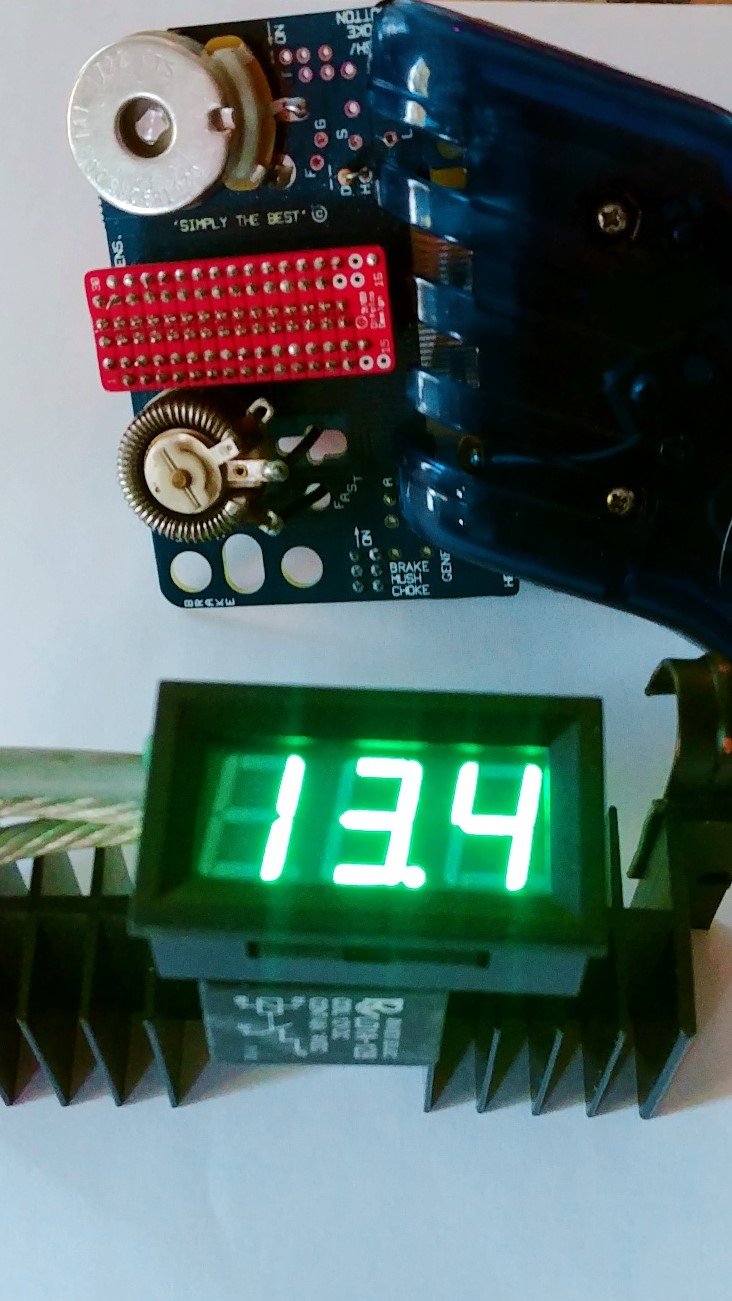I wanted to share this mod as it's easy to do and it only cost around $15.00
Controller: Difalco Genesis HD 30 Kit to upgrade Parmat Turbo. https://e-slotcar.co...-module-dd-275/
I actually built this from scratch although when you talk to Difalco they expect you to do it off an existing Parma as an upgrade, but I don't see a point of that if you just buy the Parma frame and handle and trigger. It's way more cost effective and you can do a cleaner install.
Two 40mm Fans
$10.00 Fans: https://www.amazon.c...aidmax 40mm fan
I ran the controller and noticed it got hot, so wanted to add a fan. Of all the sizes out there, 40mm was the perfect size so I added two 40mm, 12v fans. They are wired in parallel and mounted in a push rather than pull configuration on top of the heatsink and over the power transistor. What this means is that instead of pulling the heat away from transistor/heat sinks, the fans will be pushing colder ambient air on top of the transistor and heat sinks. You can do it either way, but I felt a push configuration in this case is much more effective due to the proximity of the fans to the transistor and heatsinks.
There is plenty of cooling CFM at 6000 RPM and pretty quiet due to the sealed bearing in the fans. I tested them at 13.5v also and they run like a champ, even at 14v! They were easy to install and can be removed for replacement at any time. They way they were installed is with a thick silicone tube that is pressed into the heatsink and a plastic screw were from the top screwed down into the silicone tube. This makes it all removable and also makes it a tight fit without hurting the heatsinks using sheet metal screws or other. The wiring is easy, take both the positive lines of each fan and connect them together and take both wires of the negative fan wires and connect them together. So the two positives and the two negatives of each fan are connected to each other, negative to negative together and the positive to positive together, this is a parallel connection. The reason for a parallel connection is so that each fan runs at max RPM and voltage.
Then you simply take the positive lines of the fans and connect them to your white power on your controller which is the + (positive) and the negative lines from the fans and connect it to the - (negative) on your controller (the same lines that you connect to the track in case you are confused which lines these are). Once you connect the clips to the terminals on the track, the fans will turn on and always be on. I was thinking to add an On/Off switch but decided there's no point.
Volt Meter
$4.00 Volt meter: https://www.amazon.c...e?ie=UTF8&psc=1
When I ran the controller I'm glad I had some indicator on the controller so I know what's going on while running it and the cars. The voltmeter is a good idea for quite a few reasons. One is that the controller itself has no ON/OFF indication or a light or a switch etc. I don't like anything electronic that does not have an indicator of an on/off state as it always leaves you guessing is the device on, is there power on the track, is the car connected, is there a dead spot on the track, is the motor lost a connection etc. It's also handy to know that the controller has not lost connection itself and helps to know when the car has lost connection on the track (for different reasons) as when it does the voltage display turns off is any of these cases mentioned. Of course it's most obvious that it also gives you the lane voltage so when they state they have the track set to 13.2v it's what it really is as for racing they crank it up. This is a super handy mod even if you don't put a volt meter, even a $2.00 LED light would be a great idea. Why an inexpensive device is not already included stumps me. If you want to add in a LED light, ( I was thinking that at first) there are already holes on the top left of the controller you can use to mount it and wire it the same way as the volt meter.
The voltmeter is rated 0-30v DC so you can never fry it, and it's just the right size to fit inside the Parma handle away from any other moving parts and is protected. I shaved the mounting holes on both sides of the board on the volt meter, and I added a piece of foam on the top (to fit tight) and on the back of the board to prevent a short as the circuit board is exposed and sitting on top of the Parma aluminum frame. I positioned it next to the trigger, it's a perfect fit, it never moves around or anything. The way it's wired is to take the volt meter's red wire and connect it to your white power on your controller which is the + (positive) and the black wire from the volt meter and connect it to the - (negative) on your controller (the same lines that you connect to the track in case you are confused which lines these are). Once you connect the clips to the terminals on the track the volt meter will turn on giving you the voltage.
I really enjoyed doing this mod to my Difalco Genesis HD30 and now enjoy it even more!



























